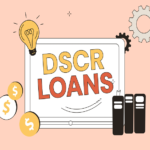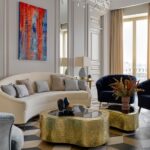In the face of climate change and dwindling resources, it has become more important than ever to prioritise sustainability in all aspects of our lives. One area where this is particularly crucial is architectural design. The buildings we inhabit have a significant impact on the environment, from their energy consumption to their waste output. In order to build a truly sustainable future for the UK, we must prioritise smart and eco-friendly design practices that minimise harm while maximising efficiency. Join us as we explore why architectural design is so crucial for building a sustainable future in the UK, and how we can work together to create smarter, greener spaces for generations to come.

Introduction to Architectural Design
As the world progresses, the need for sustainable living becomes more and more important. To help meet this demand, architects are increasingly turning to design that is eco-friendly and energy efficient. In the United Kingdom, this architectural style is being used to great effect in both new builds and renovations.
There are many reasons why architectural design is crucial for building a sustainable future in the UK. One of the most important is that it helps to reduce the carbon footprint of a building. For example, by using solar panels or wind turbines, a building can generate its own power, lessening its reliance on fossil fuels.
In addition to reducing a building’s carbon footprint, architectural design can also help to improve its energy efficiency. For instance, by using insulation and double-glazing, heat loss can be minimised. This not only saves money on energy bills but also reduces the amount of greenhouse gases emitted into the atmosphere.
Good architectural design can also have a positive impact on the environment beyond just the buildings themselves. For example, by creating pedestrian-friendly streetscapes and public spaces, people are encouraged to walk or cycle instead of taking the car. This has numerous benefits including reducing traffic congestion and pollution levels as well as promoting physical activity which is good for health.
So as you can see, there are many reasons why architectural design is crucial for building a sustainable future in the UK.
Reasons Why Architectural Design is Important in the UK
There are many reasons why architectural design is important in the UK. For one, it can help to create a sustainable future for the country. By incorporating green design principles into buildings, architects can help to reduce the overall carbon footprint of the UK. Additionally, good architectural design can improve the quality of life for residents by creating spaces that are more enjoyable and efficient to live in. Well-designed buildings can also boost the economy by attracting businesses and tourists to an area.
Architectural design is important in the UK for a variety of reasons. By focusing on sustainability, quality of life, and economic growth, architects can help to create a bright future for the country.
The Benefits of Sustainable Architecture
As the world becomes increasingly aware of the need for environmentally friendly practices, sustainable architecture is becoming more and more popular. Sustainable architecture is designed with the environment in mind, using materials and energy-efficient methods that minimise the impact on the planet.
There are many benefits to sustainable architecture, both for the environment and for those who live in or use the buildings. Sustainable buildings can help reduce greenhouse gas emissions, save energy and water, and improve air quality. They can also be more comfortable to live in or work in, thanks to better ventilation and thermal regulation. And because they’re built to last, sustainable buildings often have a lower lifetime cost than traditional buildings.
So why isn’t all architecture sustainable? Unfortunately, sustainable design often comes with a higher upfront cost. But as we become more aware of the need to protect our planet, we’re hopeful that more architects will start incorporating sustainability into their designs.
Challenges and Opportunities in the UK for Sustainable Building
As the world becomes increasingly aware of the need for sustainable development, the construction industry is under pressure to design and build more environmentally friendly buildings. In the UK, this has led to a number of challenges and opportunities for architects and engineers working in the sustainable building sector.
One of the biggest challenges facing sustainable building in the UK is the high cost of construction. Green building materials and technologies often come with a premium price tag, which can make it difficult to justify their use to clients or investors. However, as awareness of the benefits of sustainable buildings grows, it is hoped that this will start to change.
Another challenge is that many traditional building methods and materials are not very environmentally friendly. This means that there is a lot of work to be done in terms of education and training for those working in the industry. However, this also provides an opportunity for those with knowledge and expertise in sustainable building to really make a difference.
There are both challenges and opportunities when it comes to sustainable building in the UK. With rising awareness of environmental issues and increasing pressure on the construction industry to be more sustainable, it is hoped that these challenges will start to be addressed in the years ahead.
Examples of Successful Sustainable Buildings in the UK
As the world becomes increasingly aware of the need for sustainable development, more and more architects are turning their attention to sustainable design. The UK is no exception, and there are a number of examples of successful sustainable buildings in the UK.
One such example is the Passivhaus standard, which was developed in Germany and has been adopted by a number of architects in the UK. A Passivhaus is a highly energy-efficient building that requires little or no active heating or cooling, thanks to its well-insulated envelope and airtight construction. The first Passivhaus certified building in the UK was completed in 2006, and since then a number of other successful projects have been completed.
Another example of a successful sustainable building in the UK is the BREEAM (Building Research Establishment Environmental Assessment Method) certified office block at 20 Fenchurch Street in London. This building was completed in 2014 and achieved an ‘Excellent’ rating, making it one of the most environmentally-friendly office blocks in Europe.
There are many other examples of successful sustainable buildings in the UK, proving that it is possible to create beautiful, modern buildings that are also environmentally responsible. With the right architectural design, it is possible to build a sustainable future for the UK.
How to Incorporate Sustainability into Your Own Designs
As the world becomes increasingly aware of the need for sustainability, more and more people are looking for ways to incorporate sustainable practices into their lives. As an architect or designer, you have the unique opportunity to help create a sustainable future by incorporating sustainability into your designs.
There are many ways to make your designs more sustainable. One way is to use sustainable materials. Sustainable materials are those that can be replenished or reused without damaging the environment. Some examples of sustainable materials include bamboo, cork, wool, and recyclable plastics.
Another way to make your designs more sustainable is to incorporate green design principles. Green design principles take into account the entire life cycle of a product or building, from its conception to its decommissioning. By considering the entire life cycle of your designs, you can make choices that will minimise environmental impact throughout the product’s or building’s lifespan.
You can also incorporate energy-efficient features into your designs. Energy-efficient features can range from simple things like using energy-efficient lighting fixtures to more complex measures like designing a passive solar home. By incorporating energy-efficient features into your designs, you can help reduce the overall environmental impact of your projects.
Conclusion
It is clear that architectural design has an enormous role to play in creating a more sustainable future for the UK. By combining creative thinking with practical methods, architects can help create buildings and other structures which are designed to use energy efficiently while being aesthetically pleasing as well. This will not only benefit us now but also ensure that those who come after us experience a better quality of life due to our efforts today. Architectural design is therefore key when it comes to building a sustainable future in the UK, so let’s make sure we get it right!










Leave a Reply
You must be logged in to post a comment.